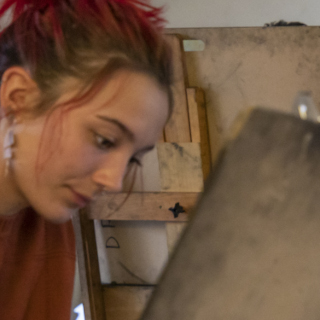Changing Education Through the Arts
Adapted from "Revitalizing Arts Education" by Karen Kaufmann
The Creative Pulse began in 1990 as the brainchild of Dr. James Kriley (then Dean of the School of Fine Arts) and Dr. Randy Bolton (Emeritus Professor of Theatre), the Pulse serves as one of the landmark arts education programs in the US, contributing to the advancement of hundreds of arts and K-12 educators.
Dr. James Kriley first proposed the Pulse as a creative remedy for education, seeking to provide teachers with new ways of thinking and learning. The seeds for the Pulse began in the late 1980s when the founders were invited to teach a seminar for experienced teachers in a summer session. As Randy Bolton describes it, "The teachers taught us exactly what they needed" —primarily that their experiences teaching in schools were not nurturing their creative spirit. Many felt that their positions robbed them of new ideas and inspiration. Kriley and Bolton quickly realized their interest in changing the culture of education would drastically shake it up, and infuse it with a more personalized, artistic approach.
As The Creative Pulse began, Kriley and Bolton developed courses in leadership and creative process, determining what kinds of experiences teachers needed to go through and what new knowledge would improve their teaching practices. How could a classroom teacher maintain his/her own creative spark while also "surviving" in public schools? How could they use their creative process to develop and deepen as teachers?
Many students who are talented in the arts don't display their talents on standardized tests. The Creative Pulse developed innovative approaches to help educators deal successfully with testing agendas that didn't suitably measure student achievement or life skills. The Pulse enabled teachers to enhance their students' critical analysis, creative thinking, problem-solving and personal initiative.
Today the Creative Pulse course offerings continue to evolve with 21st-century initiatives and education standards. The program actively engages students in multiple intelligences throughout the two years of coursework, enabling them to develop their own intelligences in new and often unexpected ways and helping them better understand the learning needs of their own students.
